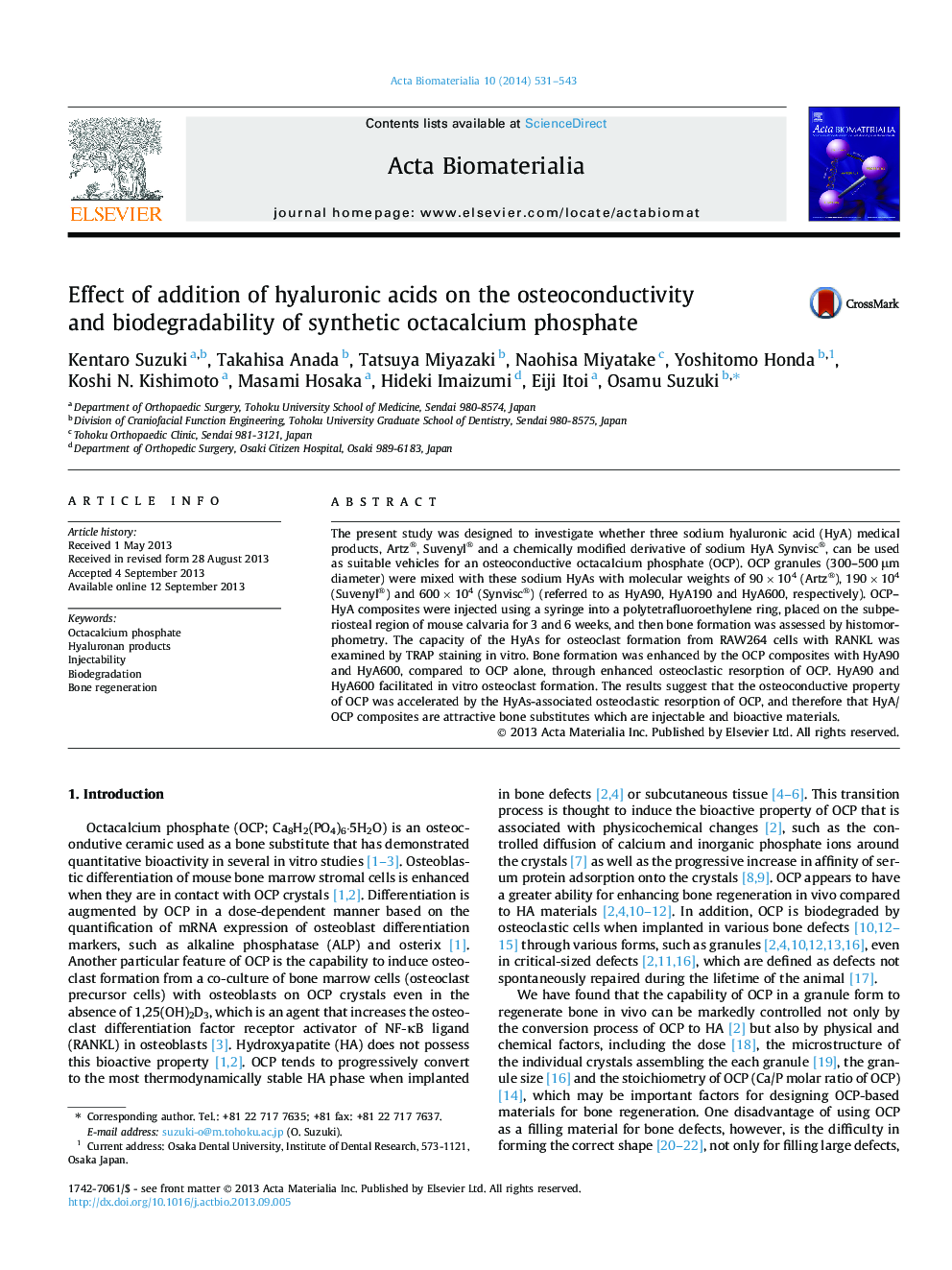| Article ID | Journal | Published Year | Pages | File Type |
|---|---|---|---|---|
| 10159452 | Acta Biomaterialia | 2014 | 13 Pages |
Abstract
The present study was designed to investigate whether three sodium hyaluronic acid (HyA) medical products, Artz®, Suvenyl® and a chemically modified derivative of sodium HyA Synvisc®, can be used as suitable vehicles for an osteoconductive octacalcium phosphate (OCP). OCP granules (300-500 μm diameter) were mixed with these sodium HyAs with molecular weights of 90 Ã 104 (Artz®), 190 Ã 104 (Suvenyl®) and 600 Ã 104 (Synvisc®) (referred to as HyA90, HyA190 and HyA600, respectively). OCP-HyA composites were injected using a syringe into a polytetrafluoroethylene ring, placed on the subperiosteal region of mouse calvaria for 3 and 6 weeks, and then bone formation was assessed by histomorphometry. The capacity of the HyAs for osteoclast formation from RAW264 cells with RANKL was examined by TRAP staining in vitro. Bone formation was enhanced by the OCP composites with HyA90 and HyA600, compared to OCP alone, through enhanced osteoclastic resorption of OCP. HyA90 and HyA600 facilitated in vitro osteoclast formation. The results suggest that the osteoconductive property of OCP was accelerated by the HyAs-associated osteoclastic resorption of OCP, and therefore that HyA/OCP composites are attractive bone substitutes which are injectable and bioactive materials.
Related Topics
Physical Sciences and Engineering
Chemical Engineering
Bioengineering
Authors
Kentaro Suzuki, Takahisa Anada, Tatsuya Miyazaki, Naohisa Miyatake, Yoshitomo Honda, Koshi N. Kishimoto, Masami Hosaka, Hideki Imaizumi, Eiji Itoi, Osamu Suzuki,
